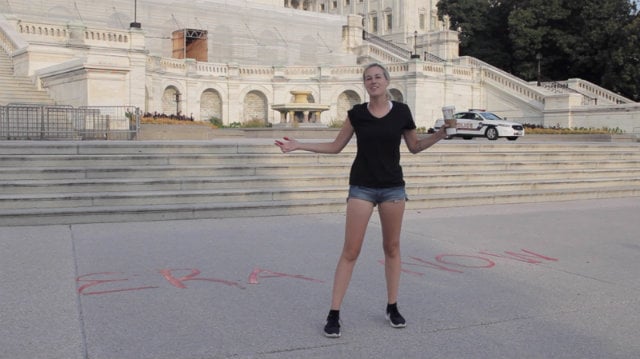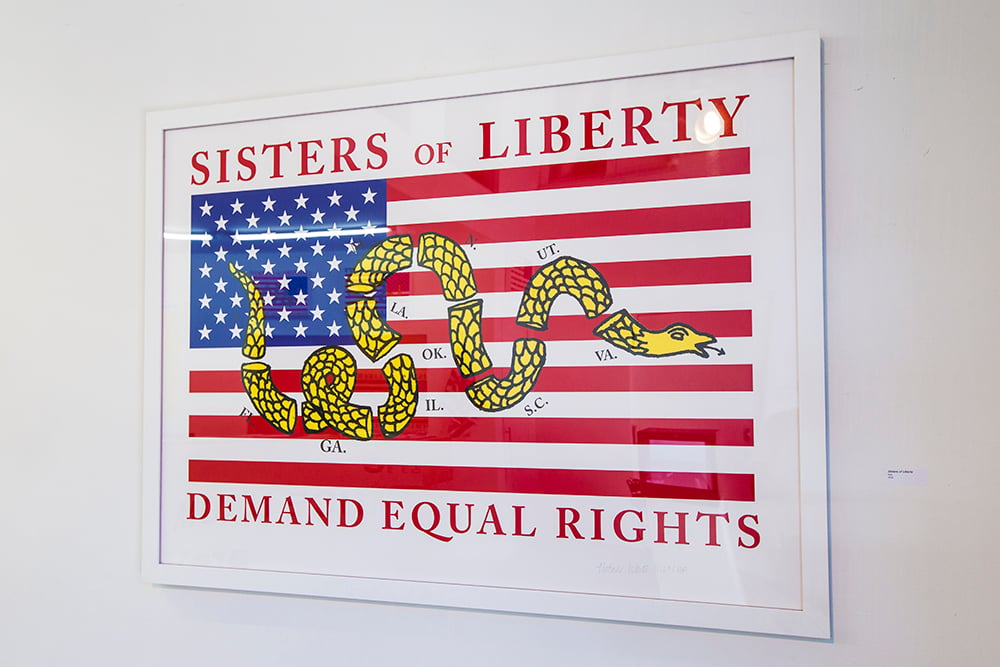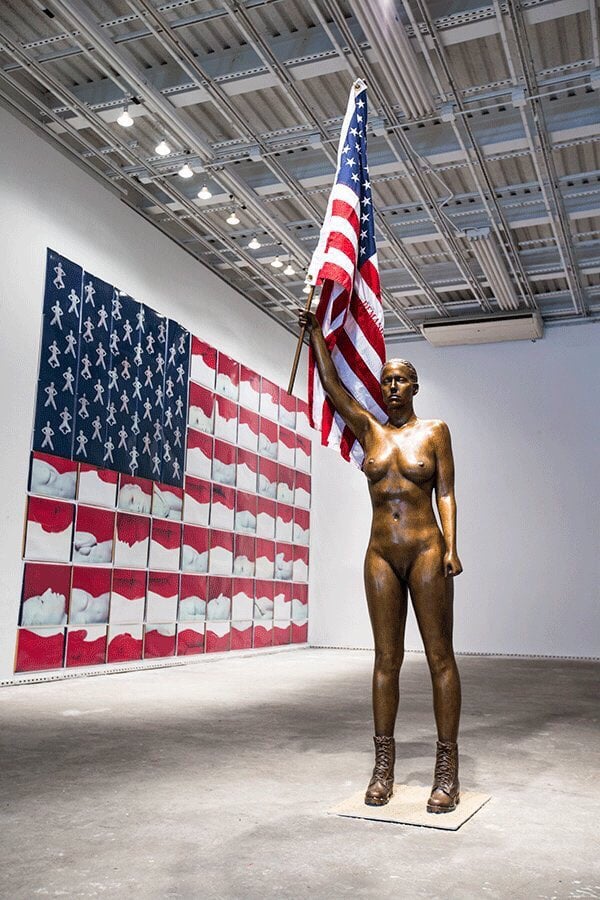Politics
Artist Natalie White Arrested for Vandalism After Equal Rights Protest
She could face up to a year in prison.

She could face up to a year in prison.

Sarah Cascone

It all began on July 8, when Natalie White set off on a 16-day Equal Rights Amendment (ERA) march, walking 250 miles from New York to Washington, DC. After reaching her destination, she walked straight up to the US Capitol building, bent down, and painted “ERA NOW” in big red letters on the pavement.
“I woke up on Sunday morning and I was really upset about Hillary not talking about [the Equal Rights Amendment], Trump not talking about it… I thought if they aren’t going to put us in the constitution, I’m going to write it on the Capitol,” White told DCist.
Earlier this month, White surrendered herself to US Capitol Police. She was arrested and charged with a misdemeanor for vandalizing federal property.
The ERA is a proposed amendment to the US Constitution that would make it illegal to discriminate against women on the basis of their sex. It was passed by Congress in 1972, but was never ratified. It has been reintroduced at every session of Congress since 1982, but has not been put to a vote again.

Natalie White. Courtesy of Liam McMullan, ©Patrick McMullan.
“Equality between women and men is a fundamental human right that should be guaranteed in the Constitution,” writes White in her IndiGoGo campaign for the project, telling Ms. that “I have a platform with my art. If I don’t use it to fight oppression I am taking the side of the oppressor.”
Surprisingly, this bold action was ignored by security on the scene, and White simply walked away. Authorities got wind of the protest after the fact, perhaps thanks to a short print item in the New York Post, in which White admitted that “I was fully expecting to be arrested.”
Yes, I did it. #marchforERA #Intersectionality #equalmeansequal pic.twitter.com/QWUrwdtLju
— Natalie White (@nataliejowhite) August 4, 2016
According to White, Capitol Police subsequently came to New York to do just that, showing up at her apartment only to be told by her roommate that she was still in Washington. The authorities allegedly got White’s phone number, and began calling her as well as her lawyer, Ronald Kuby, who is known for his work regarding civil rights, artist protests, and public nudity.
In a phone conversation with artnet News, Kuby confirmed that he arranged the terms of White’s surrender with the police, who he described as “quite accommodating.” The artist described her time in jail (some 14 hours total) in a extremely long, detailed email forwarded to artnet News. “It was horrific but I knew I was getting out,” she wrote.
Because White was charged with a misdemeanor, rather than a felony, the cost of cleaning the graffiti was less than $1,000. “I suspect the medium was chosen to grab attention and not to be a permanent marking on the Capitol,” said Kuby.
“It is a fundamental right to engage in political speech and to advocate for political change,” he added. “Whether you have the right to paint your slogan on public property is a separate question.” Under federal law, White could face up to a year in prison.
This isn’t White’s first brush with authorities. In 2013, White attracted considerable attention, including a visit from the NYPD, for her nudity-heavy Rox Gallery exhibition in the Lower East Side, provocatively titled, “Who Shot Natalie White?”

Natalie White, Sisters of Liberty. Courtesy of Natalie White.
The E.R.A. March was the follow up to White’s most recent exhibition, “Natalie White for Equal Rights,” which was on view June 5–July 16, 2016, at New York’s WhiteBox gallery. The show included a nude bronze statue of a combat boot-sporting White holding an American flag, along with other patriotic imagery with a feminist bent. Last year, the artist sat naked in a Plexiglas box with an American flag at the Hole in New York in order to raise awareness for the stalled amendment.
Kuby believes that White’s well-documented nudity may have factored into the handling of the incident. “The police actually like attractive young women with their breasts exposed,” he mused. “Go figure.”

“Natalie White for Equal Rights” at WhiteBox. Courtesy of WhiteBox.
In April, White settled a legal dispute with photographer Peter Beard, for whom she served as a muse and model, over photographs of a group of models she allegedly paid him to take. Following the settlement, another dispute arose over White’s plans to show the works at Gallery Valentine in East Hampton, timed to a Beard exhibition at nearby Guild Hall.
Should the vandalism case go to trial, White will be representing herself. “Since part of this art project is restoring the voice of women, having some old white guy talk for her doesn’t really sound congruent with her message,” Kuby explained.
In an email to artnet News, White said that she will still retain legal advisers to help her in the case, and will be raising money to cover those costs through the sale of her work at a show at New York’s Gallery 151, opening September 15.